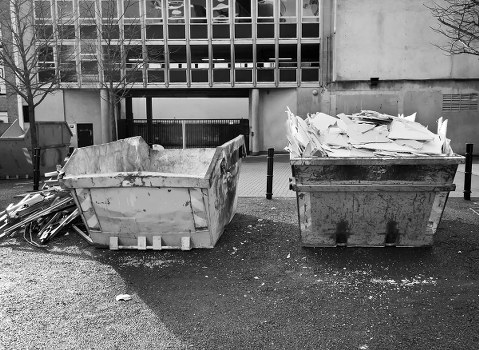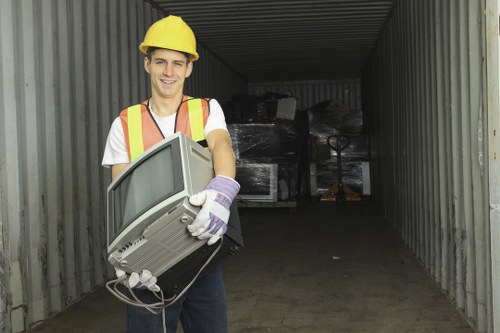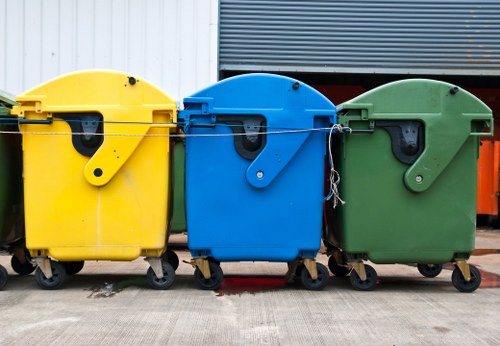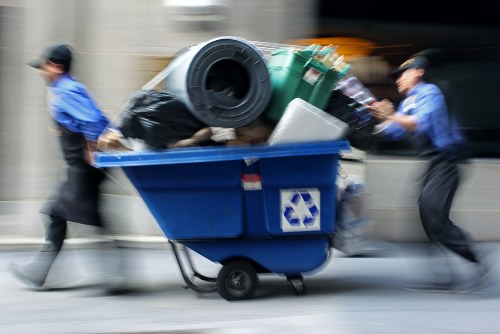Effective Builders Waste Clearance in Soho: A Comprehensive Guide

In the bustling heart of London, Soho stands out not only for its vibrant culture and dynamic architecture but also for its constant construction and renovation projects. With the ever-present need for builders waste clearance in Soho, managing construction debris efficiently is essential for maintaining the area's aesthetic and environmental standards.
Builders waste encompasses a variety of materials generated from construction, remodeling, and demolition activities. Proper clearance ensures that these materials are disposed of responsibly, minimizing environmental impact and adhering to local regulations.
Choosing the right waste clearance service is crucial for builders operating in Soho. It ensures that projects proceed smoothly without legal or environmental complications.

Why Builders Waste Clearance is Essential in Soho
Soho's dense urban environment makes efficient waste management a top priority. Here are several reasons why builders waste clearance is indispensable:
- Compliance with Regulations: London has strict waste disposal laws to protect the environment. Proper clearance helps builders comply with these regulations, avoiding hefty fines.
- Environmental Protection: Responsible waste management reduces the carbon footprint and prevents pollution, contributing to Soho's sustainability.
- Safety: Removing construction debris promptly minimizes the risk of accidents on-site, ensuring a safer working environment.
- Aesthetic Appeal: Keeping the construction site clean maintains the visual appeal of Soho, an area known for its iconic landmarks and lively streets.
Understanding the importance of waste clearance can help builders prioritize it within their project timelines.
Moreover, efficient waste management can lead to cost savings by recycling materials and reducing landfill usage fees.

Types of Builders Waste in Soho
Builders waste in Soho can be categorized into several types, each requiring specific handling and disposal methods:
1. Construction Debris
This includes materials such as bricks, concrete, wood, and metals from construction and demolition activities.
2. Hazardous Waste
Chemicals, paints, solvents, and asbestos-containing materials fall under this category and require specialized disposal.
3. Packaging Materials
Cardboards, plastics, and other packaging materials are commonly generated during construction projects.
4. Green Waste
Organic materials like garden waste from landscaping projects are also part of builders waste.
Proper segregation of these waste types is essential for effective clearance and recycling.

Choosing the Right Waste Clearance Service in Soho
Selecting a reliable builders waste clearance service involves considering several factors to ensure efficiency and compliance:
- Experience and Expertise: Look for companies with a proven track record in handling various types of construction waste.
- Licensing and Certification: Ensure the service provider is licensed and adheres to local waste management regulations.
- Recycling Capabilities: A good service will prioritize recycling and proper disposal of waste materials.
- Timeliness: Efficient waste clearance should align with your project schedule to prevent delays.
- Cost-Effectiveness: Compare quotes to find a service that offers quality clearance at competitive prices.
By evaluating these factors, builders can make informed decisions that benefit both their projects and the community.
Additionally, customer reviews and testimonials can provide insights into the reliability of the service provider.

Steps Involved in Builders Waste Clearance
Effective waste clearance involves several key steps to ensure thorough and compliant disposal:
1. Waste Assessment
Evaluate the types and quantities of waste generated to plan the clearance process accordingly.
2. Segregation
Sort waste into different categories for appropriate handling and recycling.
3. Collection
Gather the segregated waste materials from the construction site using suitable containers and equipment.
4. Transportation
Transport the collected waste to designated recycling centers or disposal facilities.
5. Disposal and Recycling
Dispose of non-recyclable waste responsibly and recycle materials wherever possible to minimize environmental impact.
Following these steps ensures a streamlined clearance process that complies with regulations and promotes sustainability.
Moreover, maintaining regular waste clearance schedules can enhance overall project efficiency.
Benefits of Professional Waste Clearance Services
Engaging professional waste clearance services offers numerous advantages for builders in Soho:
- Time Savings: Professionals handle the entire clearance process, allowing builders to focus on their core activities.
- Cost Efficiency: Expert services can reduce overall waste disposal costs through effective recycling and resource management.
- Compliance Assurance: Ensures adherence to all local and national waste disposal regulations, mitigating legal risks.
- Quality Service: High standards of cleanliness and organization are maintained on construction sites.
- Environmental Responsibility: Promotes sustainable practices by maximizing recycling and minimizing landfill use.
By leveraging these benefits, builders can enhance their project outcomes and contribute positively to Soho's urban environment.
Additionally, partnering with reputable waste clearance services can improve a builder's reputation and client satisfaction.
Environmental Impact of Builders Waste Clearance
Proper waste clearance significantly impacts the environment, particularly in a densely populated area like Soho:
Reducing Landfill Use
By recycling and reusing materials, the amount of waste sent to landfills is minimized, preserving valuable land and reducing methane emissions.
Conserving Resources
Recycling materials such as metal, wood, and concrete conserves natural resources and reduces the need for raw material extraction.
Lowering Carbon Footprint
Efficient waste management practices contribute to lower greenhouse gas emissions, combating climate change.
Promoting Sustainable Development
Integrating waste clearance into construction projects supports sustainable urban growth in Soho.
Moreover, environmental stewardship can enhance the community's quality of life and promote public health.
Investing in green waste clearance solutions aligns with global sustainability goals and enhances corporate social responsibility.
Cost Considerations for Waste Clearance in Soho
Budgeting for builders waste clearance is essential for project planning. Several factors influence the overall cost:
- Volume of Waste: Larger projects generate more waste, increasing disposal costs.
- Type of Waste: Hazardous or specialized waste requires more expensive handling and disposal methods.
- Frequency of Clearance: Regular pickups can be more cost-effective than sporadic services.
- Recycling Rates: Higher recycling rates can reduce disposal fees through material reuse.
- Location and Accessibility: Soho's central location may affect transportation costs and service availability.
Understanding these cost drivers helps builders allocate resources efficiently and avoid unexpected expenses.
Additionally, investing in long-term waste management strategies can yield cost savings over the course of multiple projects.
Regulatory Compliance for Waste Clearance
Adhering to waste management regulations is crucial for builders in Soho. Key regulatory aspects include:
Waste Classification
Understanding the categories of waste (e.g., hazardous, non-hazardous) ensures proper handling and disposal.
Licensing Requirements
Licensed waste carriers are mandated to transport and dispose of waste legally. Ensure your service provider holds necessary licenses.
Documentation
Maintaining records of waste disposal is required for compliance and accountability, especially for large projects.
Environmental Protection Laws
Compliance with laws aimed at reducing environmental impact, such as the Waste Framework Directive, is essential.
Non-compliance can result in legal penalties, project delays, and damage to reputation.
Staying informed about local and national waste management regulations helps builders navigate legal complexities effectively.
Innovative Waste Management Solutions
Advancements in waste management offer new opportunities for builders in Soho:
Recycling Technologies
Modern recycling methods allow for more efficient processing of construction waste, increasing material recovery rates.
On-Site Waste Processing
Portable waste processing equipment can be used on construction sites to reduce the volume of waste transported off-site.
Digital Waste Tracking
Software solutions enable real-time tracking of waste generation and disposal, enhancing transparency and efficiency.
Green Building Practices
Incorporating sustainable materials and design reduces overall waste production and promotes eco-friendly construction.
Adopting these innovative solutions can lead to more sustainable and cost-effective waste management practices.
Additionally, staying ahead with the latest technologies can provide a competitive edge in the construction industry.
Case Studies: Successful Waste Clearance in Soho
Several projects in Soho showcase effective builders waste clearance strategies:
The Soho Redevelopment Project
By implementing strict waste segregation and partnering with local recycling centers, the project minimized landfill use and achieved sustainability goals.
Modern Office Complex Construction
This project utilized on-site waste processing equipment, significantly reducing waste transportation costs and enhancing project timelines.
Historic Building Renovation
Specialized handling of hazardous materials ensured compliance with preservation standards and environmental regulations.
These case studies highlight the importance of tailored waste clearance solutions in achieving project success.
They also demonstrate how proactive waste management can contribute to landmark projects in Soho.
Future Trends in Builders Waste Clearance
The waste clearance industry is evolving, with emerging trends shaping future practices:
- Circular Economy: Emphasizing recycling and reuse to create a closed-loop system, reducing waste generation.
- Automation and AI: Utilizing technology to optimize waste sorting, tracking, and management processes.
- Green Certification: Increasing demand for environmentally certified waste clearance services aligns with sustainable building standards.
- Collaborative Platforms: Digital platforms connecting builders with waste clearance providers enhance efficiency and service quality.
- Zero Waste Initiatives: Striving for zero waste generation through innovative design and construction practices.
Staying abreast of these trends enables builders to adopt forward-thinking waste management strategies.
Additionally, integrating these trends can lead to more resilient and sustainable construction practices in Soho.
Conclusion
Effective builders waste clearance in Soho is a critical component of successful construction projects. It ensures regulatory compliance, promotes environmental stewardship, and enhances project efficiency. By choosing the right waste clearance services, implementing best practices, and staying informed about industry trends, builders can contribute to Soho's vibrant and sustainable urban landscape.
Don't let waste management hinder your project's success. Contact us today to learn how our professional waste clearance services can support your construction needs in Soho.
